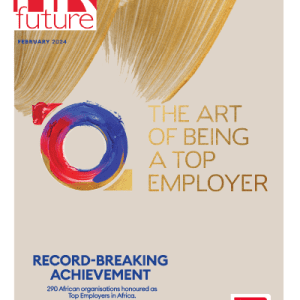As the global workforce adapts to the needs of the Fourth Industrial Revolution, so too must the teams who seek out talent embrace technology to sharpen their focus aid them in acquiring the right talent.
We take a look at four 21st century solutions that can help talent acquisition specialists in South Africa make better searching and hiring decisions in the digital world.
Use technology to delve deeper, faster
High employee turnover is a risk for any South African business, and the current lack of formal screening systems is a big contributing factor. Identity verification is also an often onerous task which requires candidates to submit reams of detail and visit offsite locations to complete the process.
Local tech innovators MyImprint aim to change this by giving businesses and individuals across South Africa the ability to run criminal and identity verifications via a user-friendly online portal, using only an ID number as reference.
MyImprint is the first business of its kind to innovate a digital consent verification system in South Africa, making it a completely paperless system from start to finish. Through a strategic partnership with Jetline, MyImprint offers fingerprint capture terminals across the country. No bookings are required, and the fingerprints are cross-referenced with the SAPS and The Department of Home Affairs. Using ultra-secure digital consent, fingerprints can be used to verify a criminal and identity status simply by registering on MyImprint.co.za.
Companies can also opt for continuous verification, where, once fingerprints are captured, regular re-verifications can be scheduled at predetermined intervals to continually assess the status of employees’ identity and potential criminal records. 
Run ‘action interviews’
It’s difficult to pose a question in a job interview that will demonstrate what someone will actually contribute, when called upon. In industries where creativity, quick thinking and abstraction are key, consider engaging candidates in action interviews.
Set up a mock meeting which is focussed on solving a problem. It’s a great way to test candidates’ levels of participation, listening and processing ability, as well as the quality of discussion they engage in and the ideas they generate and whether they generate anything at all.
If customer service is a key component of the job, have your in-house experts play out realistic scenarios from opposite ends of the spectrum and see how the candidate responds. Discussing the handling of customer service issues and actually handling them are two very different things.
If conceptualising new ideas is the aim of the role, have the candidate and the interviewers role play with a hypothetical product or service, relevant to the industry in question. Asking everyone to start with “What if we …” and then suggesting a new approach or improvement tests the candidate’s ability to conceputalise and it’s also a great way to test their knowledge of your company, and the industry.
Embrace video as a recruitment tool
As bandwidth access improves in South Africa, the popularity of video sharing is on the rise and video is a great way to illustrate workplace culture, easily share industry information and engage potential candidates.
While many companies still rely on traditional job advertisements and interview processes, using video could give your organisation the edge in recruiting. Using video also plays to the strengths of ‘Social Recruiting’ – the use of social networks to source candidates.
Since up to 93% of communication is non-verbal, body language plays a key role in conversation, and as a result, the popularity of video conferencing is on the rise, with companies demonstrating that it improves meeting efficiency and prevents miscommunications by enabling teams to see one another. A recent survey on Lifesize.com illustrated the productivity benefits of video calling, with 89% of respondents saying that video conferencing reduces time taken to complete projects or tasks. 98% of respondents also said that video conferencing helps with relationship building, both inside and outside the company. So why wouldn’t you conduct a recruitment interview this way, if the candidate is in a different location? Video conferencing interviews are also recordable and shareable, making it easier to get input from a distributed hiring team.
Tap into Artificial Intelligence
An Entelo report on recruiting trends in the US showed that 62% of companies plan to invest in AI technology for recruiting purposes, this year. IBM’s Watson platform removes the unconscious bias many hiring managers inadvertently display in questions posed to candidates during the live interview process by continuously looking for indicators that would suggest a positive fit for the candidate and then presenting the interviewer with questions to ask which focus solely on performance success.
US-based Beamery treats candidates like potential customers, with a CRM-type application. The AI and machine learning elements of their platform helps sort through candidates to suggest the ones best-suited and even monitors their behaviour to suggest when might be the best time to reach out to them.
Not that any of this negates the role of the acquisition team in the recruitment process but rather, the harnessing of AI will deepen expertise, build stronger candidate relationships and help them become even more trusted advisors to the business.
Written by Trevor Crighton and sourced from Urban Espresso PR.












